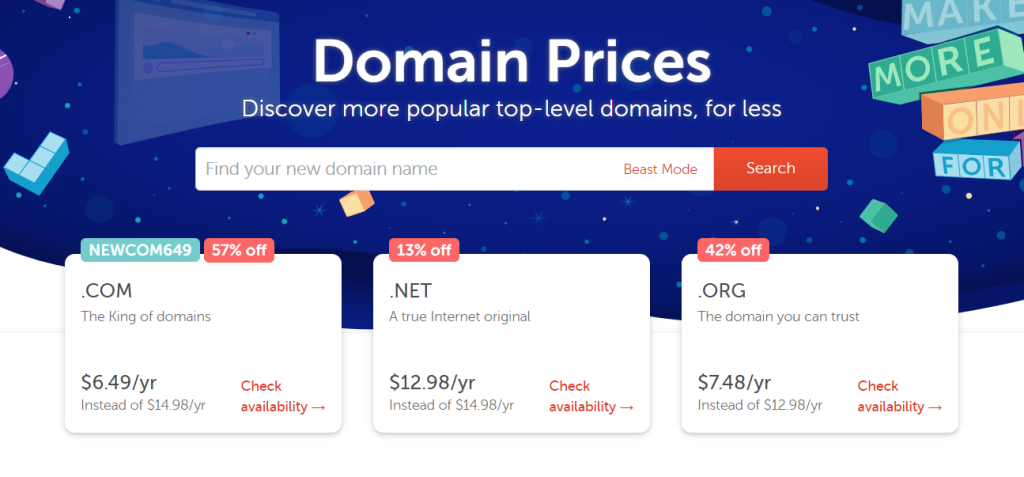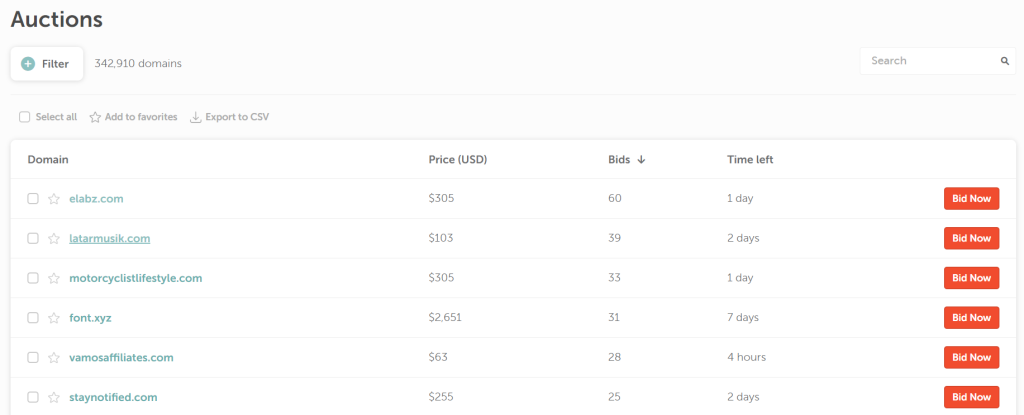Best Domain Guide – What You Need to Know About Domain

What should we pay attention to when buying a domain? Some basics you should know about Doman? What are the different types of domains? Which steps should we follow? We have compiled this guide to answer these basic quires about the domain.
The widespread use of the internet increases the importance of terms and concepts related to websites. Domain, web servers, different types of servers, and similar internet elements are now widely used. Today, even internet users want to have a general knowledge of these concepts. This guide is intended to discuss all things you need to know about the domain.
How Does the Domain Work?
Visitors who want to visit your website type your website domain name into their browser. The domain name they type is shared with the global server network that creates a Domain Name System (DNS). Global servers look at name lovers for domain names and forward visit requests to the servers.
Domain addresses are managed by hosting providers. Your website hosting provider sends the request from the visitor to the computer where your website is stored. These computers are also called web servers. These servers use software like Apache or Nginx. In this way, the information on your website is sent back to the visitor’s internet browser, and thus your visitors log into your website.
There are multiple servers with multiple plans to host your website. If you are not getting the potential results from your present host, you can also switch to new host.
What are the Domain Types?
There are domain name types that offer quite different services from each other. Although we see that the “.com” domain extension is used more frequently, various domain name types such as “.org” or “.net” are also frequently used. Some of these domain types are:
1. Top Level Domain (TLD)
Top-level domains, as you can figure out from the name, are the type of domain name that is in the top layer of the domain triangle. Top-level domains also fall into quite different branches, but the most common top-level domains are: “.com”, “.org”, and “.net”.
The official lists of top-level domains are managed by the Assigned Numbers Authority (IANA), which includes TLDs, ccTLDs, and gTLDs. You can view top-level domain names from this institution.
2. Generic Top Level Domain (gTLD)
Generic top-level domains are essentially a variation of top-level domains that do not need country codes. These domain names are mostly designed for private uses. For example; The “.edu” extension is used by educational institutions or the “.gov” extension is used by military institutions.
Apart from this, no criteria are sought to create a general top-level domain name registration. For this reason, the “.com” extension is not only used for commercial purposes.
3. Country Code Top Level Domain (ccTLD)?
Internet country area codes contain international country codes and consist of only two letters. For example, the United States uses the “.us” area code. Internet country area codes are used mainly by companies that want to create particular sites in specific regions and thus indicate that their visitors are at the correct address.
4. UnSponsored Top Level Domain (uTLD)
A UnSponsored top-level domain is a subset of generic top-level domains. These are unrestricted, generic top-level domains that can be used by domain name companies such as “.com” or “.info.”
When domains were introduced in 1980, there were a total of seven generic top-level domains, and only three of these domains could be registered unrestrictedly. Most users turned to the “.com” extension because of the scarcity of top-level domain name options. For this reason, many domain name registration companies and their users generally prefer the “.com” extension.
5. Second Level Domain (SLD or 2LD)
Second-level domains are located just below top-level domains. Their usage in general can be shown with the following example: “.co.uk.” British companies use this pattern. British government agencies use .gov.uk.” British academic institutions use .ac.uk.”
Things are Required to Choose a Domain
When choosing a domain, you should think carefully and do research. In addition, there are many essential points that you should pay attention to. Some basic points are detailed in the below.
- Many firms provide cheap domains. If you acquire a domain name cheaply, they may sell your company information to other companies. Therefore, examine the company’s service and security conditions before agreeing.
- You should choose the suitable TLD (Top-Level Domain). Popular options like .com, .org, and .net are often preferred
- Check if the domain name you are going to buy is already in use. Buying a domain name that is already in use can cause trouble and harm you financially.
- Choose a domain name that you can use for a long time in domain name selection. You can change your domain name later, but this may cause a decrease in the number of visitors.
- You should choose a domain name that is easy to write, understand, and read when buying your domain name. If your domain name is entered incorrectly in browsers, your visitors may be redirected to the wrong sites, and this will affect you badly.
- Be alert for hidden fees. You should read the terms of service well. Even though it is cheap to buy a domain name, some companies may charge a high fee to re-buy your domain name when it expires.
How to Get Domain?
Buying a domain name by considering the criteria highlighted above when creating your website is important. Many companies help you get a domain name. At this point, choosing the right company will prevent you from having problems in the following steps.
1. Buying a New Domain
You can easily get your domain name from the websites of different companies. However, we want to remind you that you should first check whether your domain name is suitable. If it is not, you can create a new one, use variations, or negotiate with the person using your domain name.

2. Buying a Registered Domain (Second Hand Domain)
If you want to buy an already existing domain name, you can do so from the digital websites of various companies. You can buy or sell the domain name by filling in the necessary information by clicking on the tabs for domain names sold, domains sold, and similar.
3. Buying a Domain at an Auction
Domain names can be purchased and sold at auctions. The prices of domain names are affected by their retention and how well they rank in browsers. Even if you buy it for a few dollars, you can sell a domain name to the right person for a very high fee from brokers.

Therefore, domain names are auctioned. This gives domain name owners the opportunity to earn large amounts of money. Again, you can view the domain names that are auctioned from different sites or you can put your own domain name on these websites.
What are Domain Extensions?
Many domain name extensions are actively used – these are also referred to as domain types. While there are many domain extensions, some are used at a much higher rate. Here are some popular domain extensions in order:
| TlDs | Details |
|---|---|
| .com | Initially intended for commercial entities, now widely used for various purposes |
| .org | Typically used by non-profit organizations |
| .net | Initially meant for network-related entities, now used for various types of websites |
| .edu | Reserved for educational institutions, such as colleges and universities |
| .gov | Restricted to U.S. government entities and agencies |
| .mil | Used by the U.S. military |
| .ccTLDs | Country code top-level domains, such as .us for the United States or .ca for Canada |
| .travel | Used by organizations providing travel services |
Finally
This was all about the best domain guide. Here, I have tried to explain everything you need to know about these in detail. Further, it is evident that choosing a domain name is a very difficult process. As you have to comply with multiple requirements and policies.
If any of those are not followed, you may get into trouble in the future. That’s why you should keep an eye on all the things that need to be strongly followed in this journey.




